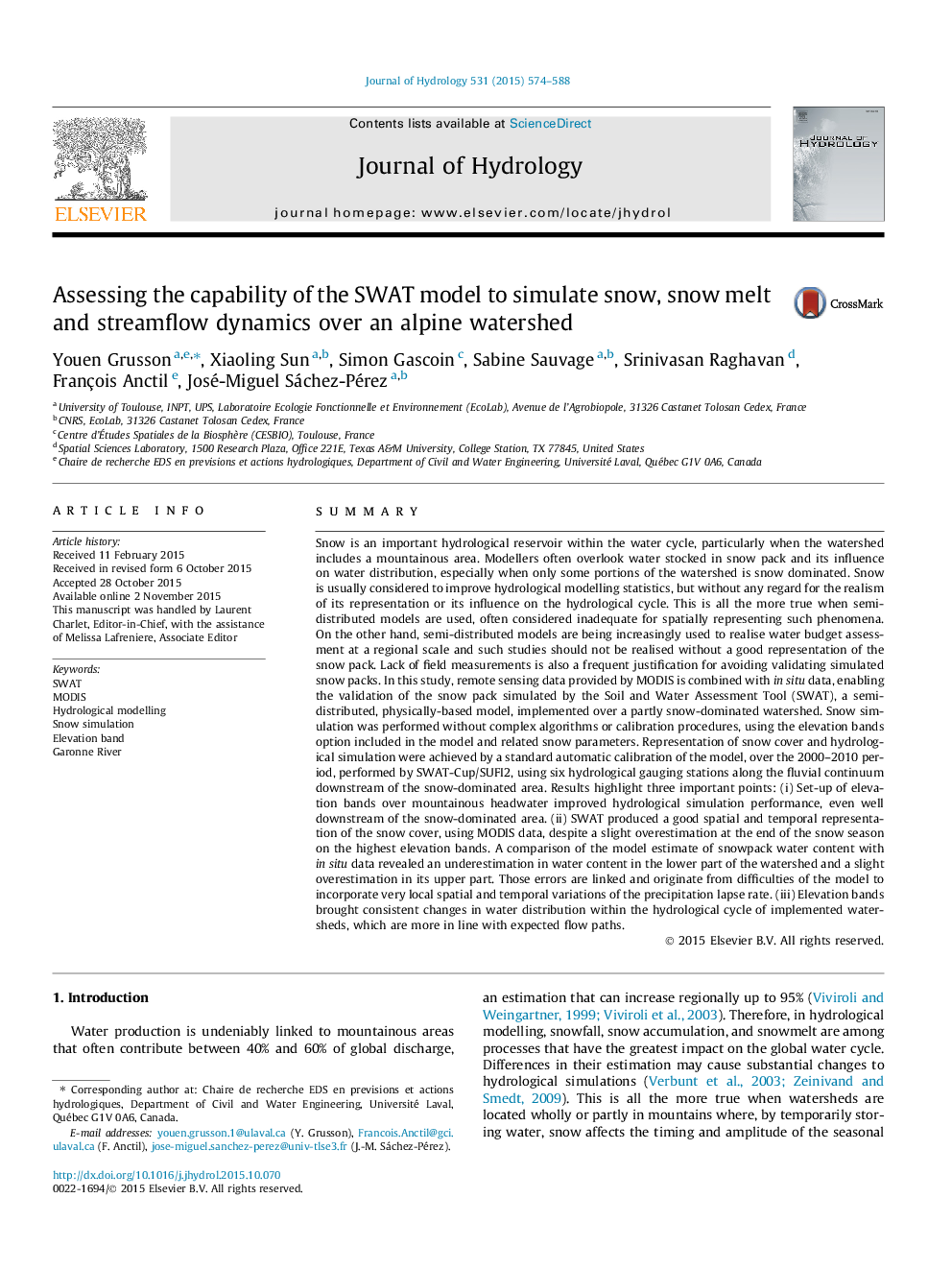| کد مقاله | کد نشریه | سال انتشار | مقاله انگلیسی | نسخه تمام متن |
|---|---|---|---|---|
| 6409819 | 1332874 | 2015 | 15 صفحه PDF | دانلود رایگان |

- Exploration of various snow representations offered by SWAT.
- Remote sensing and in situ data have been used to validate the snow simulation.
- Benefits of each one on the discharge simulation have been assess.
- Impact of melting dynamics on other hydrological components.
SummarySnow is an important hydrological reservoir within the water cycle, particularly when the watershed includes a mountainous area. Modellers often overlook water stocked in snow pack and its influence on water distribution, especially when only some portions of the watershed is snow dominated. Snow is usually considered to improve hydrological modelling statistics, but without any regard for the realism of its representation or its influence on the hydrological cycle. This is all the more true when semi-distributed models are used, often considered inadequate for spatially representing such phenomena. On the other hand, semi-distributed models are being increasingly used to realise water budget assessment at a regional scale and such studies should not be realised without a good representation of the snow pack. Lack of field measurements is also a frequent justification for avoiding validating simulated snow packs. In this study, remote sensing data provided by MODIS is combined with in situ data, enabling the validation of the snow pack simulated by the Soil and Water Assessment Tool (SWAT), a semi-distributed, physically-based model, implemented over a partly snow-dominated watershed. Snow simulation was performed without complex algorithms or calibration procedures, using the elevation bands option included in the model and related snow parameters. Representation of snow cover and hydrological simulation were achieved by a standard automatic calibration of the model, over the 2000-2010 period, performed by SWAT-Cup/SUFI2, using six hydrological gauging stations along the fluvial continuum downstream of the snow-dominated area. Results highlight three important points: (i) Set-up of elevation bands over mountainous headwater improved hydrological simulation performance, even well downstream of the snow-dominated area. (ii) SWAT produced a good spatial and temporal representation of the snow cover, using MODIS data, despite a slight overestimation at the end of the snow season on the highest elevation bands. A comparison of the model estimate of snowpack water content with in situ data revealed an underestimation in water content in the lower part of the watershed and a slight overestimation in its upper part. Those errors are linked and originate from difficulties of the model to incorporate very local spatial and temporal variations of the precipitation lapse rate. (iii) Elevation bands brought consistent changes in water distribution within the hydrological cycle of implemented watersheds, which are more in line with expected flow paths.
Journal: Journal of Hydrology - Volume 531, Part 3, December 2015, Pages 574-588